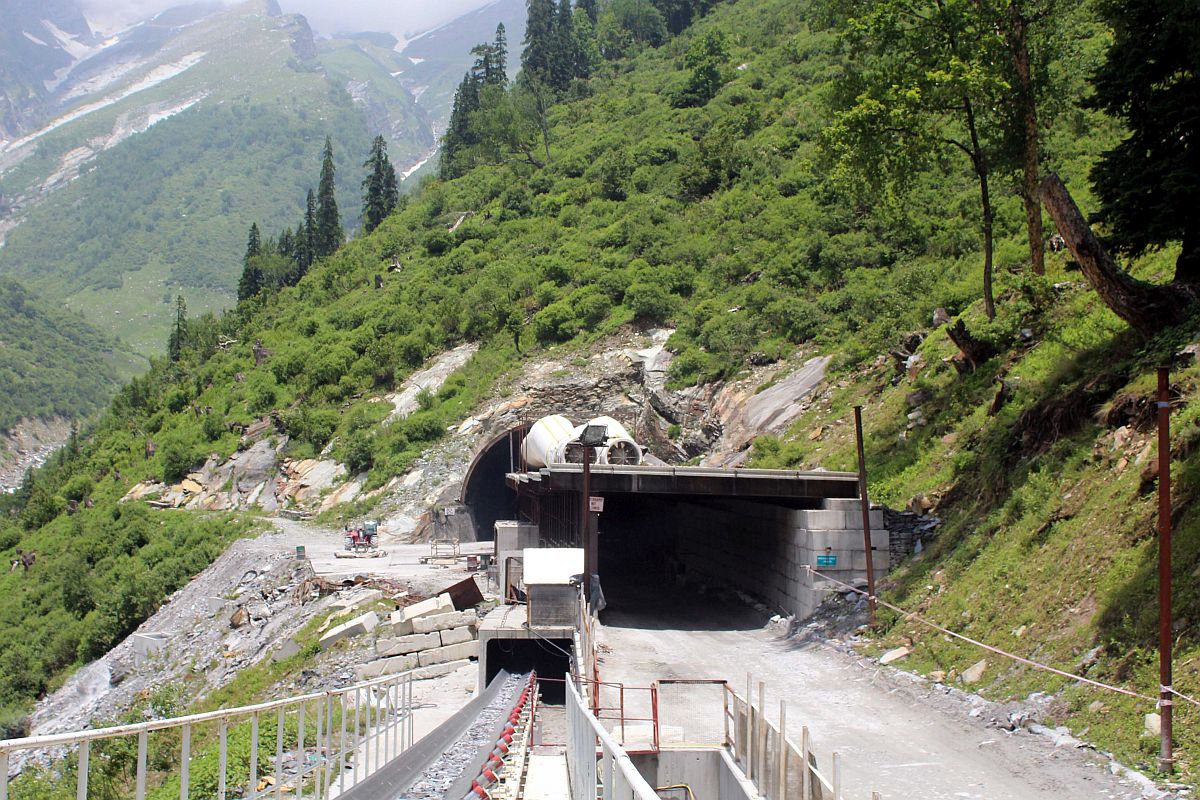Seventy-three years after independence, the majestic Rohtang tunnel will unlock the fate of tribal folks in Lahaul valley in the cold desert of Lahaul Spiti district in Himachal Pradesh.
The 8.8 kilometre long tunnel is set to be operational in September this year and will give all weather connectivity to Lahaul that remained cut off from the rest of the world for almost six months through winters every year, following heavy snow on 13050 feet high Rohtang Pass.
The Rohtang Pass connects Manali with Lahaul. The tunnel, costing Rs 3500 crore, was the dream project of former Prime Minister, Atal Bihari Vajpayee and is hence named Atal tunnel.
It will reduce the travelling time from Manali to Lahaul to half and is of strategic importance from defence point of view as Lahaul connects to Leh ahead.
Lahaul Spiti district comprises Lahaul and Spiti valleys, with Kunzum Pass (15060 feet high) in between. Spiti is accessible through tribal district Kinnaur, but is cut off from Lahaul valley in winters due to heavy snow on Kunzum Pass.
It was a challenging job for the Border Roads Organisation (BRO) to dig up an all-weather tunnel in the toughest of terrain. The project that took off on ground ten years back hit many roadblocks because of harsh weather all these years.
“We are waiting in wings. Next winter will be different. This will change the world for us,” said Mohan Lal, 62, of Malang village in Lahaul.
“We passed the winters from November to May, eating, dancing and enjoying community festivals. But the period was no less than an ordeal every year, as it stalled development, economy and left people on the mercy of God in medical emergencies,” said Yamuna Devi, 32, from Keylong.
She revealed that pregnant women faced much difficulty in winters in an emergency as there were no specialists in Keylong hospital and subsidised chopper flights to tribal belts were uncertain.
The feeling is echoed by the tribals from different walks of life as they had to spend virtually half of their lives landlocked in Lahaul due to snow every winter, or afford a house in adjacent Kullu to live a comfortable life.
Over the years, there has been a slow exodus from Lahaul with more and more people looking for greener pastures outside the tribal area due to tough conditions back home.
In the 2011 census, Lahaul Spiti district of Himachal had shown a negative decadal growth rate of population (- 5.0 per cent from 2001-2011), with migration from the area cited as one of the main reasons for this.
The locals in Lahaul feel that once the tunnel is operational, it will boost the local development and economy, and may ultimately help in reverse migration.
“This will bring tourism and help in related progress, right from roads to infrastructure. We can promote winter tourism in a big way in Lahaul,” said Tsering, 39, who runs a food joint in Keylong.
The officials in Lahaul say the all-weather connectivity will help in overall mainstreaming of the area.
“People had to go out for good education; medical facilities etc. Generally the government employees don’t want to join in the tribal area because of harsh conditions and lack of basic facilities. The round-the-year connectivity will lead to better education and health care services in Lahaul and improve attendance in the government offices also,” they said.












